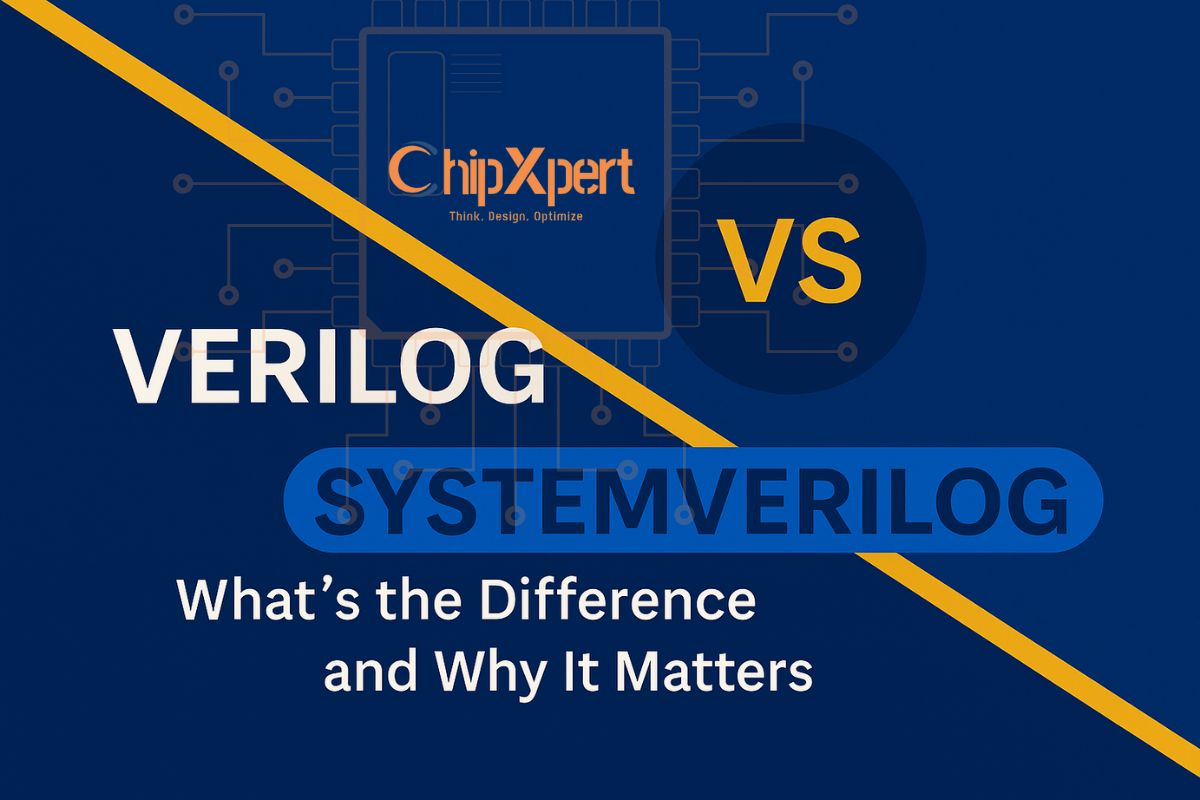Verilog vs SystemVerilog: What’s the Difference and Why It Matters
In the world of VLSI design, choosing the right hardware description language (HDL) is crucial for creating efficient and reliable chip designs. Two popular options, Verilog and SystemVerilog, often spark debates among engineers. While both are used to describe and verify digital systems, they serve different purposes and offer unique features. If you’re wondering about the difference between Verilog vs. SystemVerilog, this guide breaks to help you understand their roles in modern chip design.
What Is Verilog?
Verilog, introduced in 1984 by Gateway Design Automation, is a widely used HDL for designing and modeling digital systems. Think of it as a blueprint for hardware, allowing engineers to describe circuits like processors or memory units. Verilog’s syntax is straightforward, similar to C, making it accessible for beginners. It supports RTL (Register Transfer Level) modeling, synthesis, and simulation, making it a go-to choice for ASIC and FPGA designs.vl
Verilog excels in describing hardware behavior at various abstraction levels, from gates to complex systems. Its simplicity and robust ecosystem of tools, like simulators and synthesis software, have made it a staple in the semiconductor industry for decades.
What Is SystemVerilog?
SystemVerilog, an extension of Verilog, was introduced in 2002 and standardized by IEEE in 2005 (IEEE 1800). It builds on Verilog’s foundation by adding advanced features for both design and verification. SystemVerilog is a superset of Verilog, meaning all valid Verilog code is compatible with SystemVerilog, but it offers far more capabilities. It’s designed to handle the growing complexity of modern chips, particularly in SoC (System-on-Chip) and large-scale designs.
SystemVerilog shines in verification, offering tools like constrained-random testing and coverage analysis. It’s a favorite among engineers working on cutting-edge projects where robust testing is critical.
Key Differences Between Verilog and SystemVerilog
Let’s dive into the main differences between these two HDLs to help you decide which suits your project.
1. Purpose and Scope
- Verilog: Primarily focused on hardware design and modeling. It’s ideal for describing circuits and simulating their behavior but lacks advanced verification features.
- SystemVerilog: Combines design and verification. It extends Verilog with powerful tools for testing and validating complex designs, making it a one-stop solution for modern workflows.
2. Verification Capabilities
- Verilog: Limited to basic testbenches, which can be time-consuming for large designs. Engineers often rely on external tools for comprehensive verification.
- SystemVerilog: Offers advanced verification features like constrained-random stimulus generation, functional coverage, and assertions. These streamline the testing process, reducing errors in complex systems.
3. Data Types
- Verilog: Supports basic data types like wire, reg, and integer. Its simplicity is great for small designs but can feel restrictive for complex ones.
- SystemVerilog: Introduces advanced data types like logic, enum, struct, and class. These enable object-oriented programming (OOP) and make it easier to model intricate systems.
4. Syntax and Features
- Verilog: Uses a concise syntax for RTL design but lacks constructs for high-level modeling or verification.
- SystemVerilog: Enhances Verilog with features like interfaces, packages, and dynamic arrays. It also supports OOP, allowing engineers to write reusable, modular code.
5. Industry Adoption
- Verilog: A long-standing standard, widely used in legacy projects and smaller designs. Its simplicity makes it a favorite for educational purposes.
- SystemVerilog: The preferred choice for modern, large-scale designs, especially in industries like automotive and AI, where verification is critical. Most EDA tools support SystemVerilog seamlessly.
Which Should You Choose?
Choosing between Verilog and SystemVerilog depends on your project’s needs:
- Use Verilog for simpler designs, legacy projects, or when working with basic synthesis and simulation tools. It’s also great for learning HDL fundamentals.
- Choose SystemVerilog for complex designs requiring robust verification, such as SoCs or high-performance chips. Its advanced features save time and improve design quality.
For most modern VLSI projects, SystemVerilog is the better choice due to its versatility. However, learning Verilog first can build a strong foundation before transitioning to SystemVerilog.
Why It Matters in VLSI Design
Understanding the differences between Verilog and SystemVerilog is key to staying competitive in the semiconductor industry. As chips grow more complex, SystemVerilog’s verification capabilities are becoming indispensable. By mastering both languages, you can tackle a wide range of projects, from simple controllers to cutting-edge AI processors.
Ready to dive into HDLs? Start with online VLSI courses or explore SystemVerilog’s verification tools to boost your skills. Whether you’re designing or verifying, the right HDL can make all the difference in creating reliable, high-performance chips.



